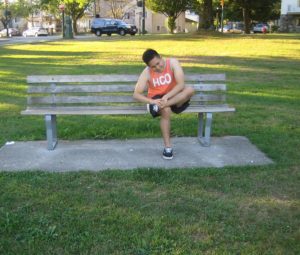An ingrown toenail is a usual and annoying cause of pain, often due to incorrect footwear that does not allow the nail to grow properly or poor nail trimming.
What are the indications?
The big toe is usually affected. The sides of the nail appear to grow downwards into the skin surrounding the toe. There is pain felt along with tenderness if gentle pressure is applied to the area at the side of the nail.

There is also redness on the affected toe around the sides, especially the side where the nail grows inwards. Swelling might also be present and infection is likely possible as a fungal infection or becomes an infected ingrown toenail.
Management of an ingrown toenail
The treatment in most cases of an ingrown toenail is soaking the affected toe in warm salt water 3-4 times throughout the day. In case the toe becomes infected, have diabetes or bad circulation in the foot, it is best to seek medical care right away.
When trimming the nails, it should be done straight across the toenail. Do not round the corners of the toenail since this promotes growth downwards into the toe. It is not ideal to cut out the ingrown. Some home remedies can be used but health professionals are against them since this will only encourage the nail to grow back in the same way again.
If a podiatrist is consulted, the troublesome region of the nail is elevated and a V-shaped cut is created to stretch out the surrounding soft tissues using a cotton bud. In case the toenail is infected with a fungal infection, treatment involving oral antibiotics or a local antifungal treatment is required.
Is surgery required?
Surgery is oftentimes carried out in severe cases to get rid of the nail border. This procedure is called resection of the exterior aspect of the nail with the purpose of preventing the nail borders from damaging the soft tissues of the toe at the sides of the nail.
This is usually performed under local anesthetic in which the bad tissue is taken out. In addition, the nail matrix is treated using phenol to prevent re-growth.
